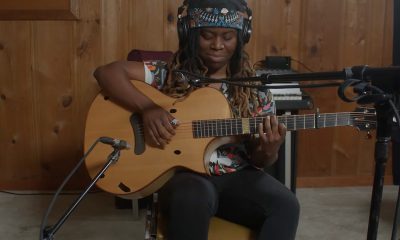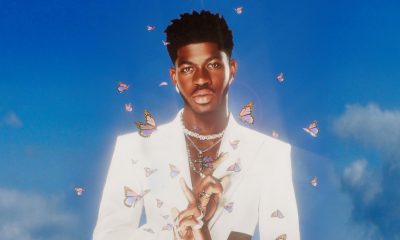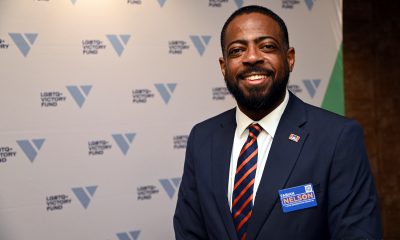a&e features
Former Avalon singer on coming out, getting ousted and where he is today
Michael Passons was founding member of CCM supergroup known for ‘Testify to Love’
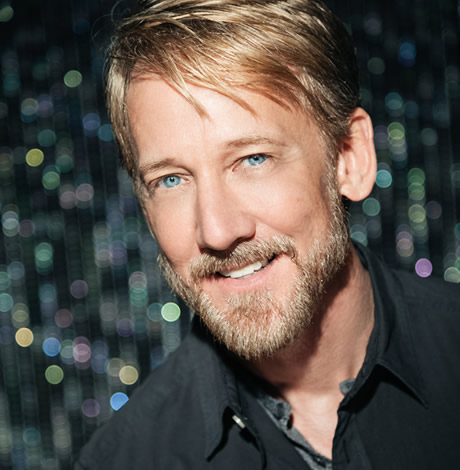
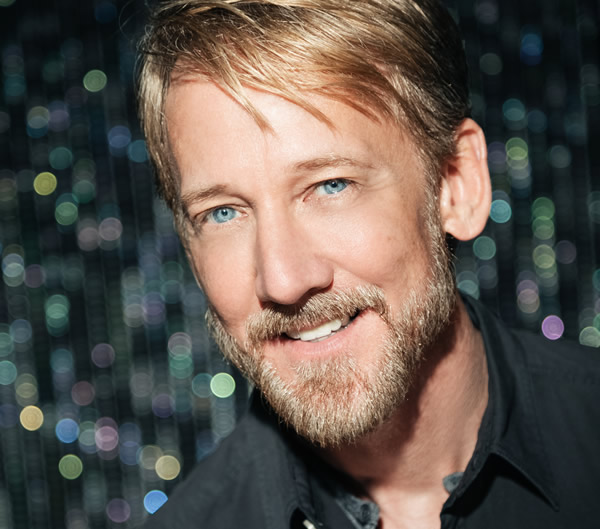
Fans of the Christian pop group Avalon always wondered why founding member Michael Passons resigned abruptly in 2003 and then seemed to drop off the face of the earth.
There was talk of a solo album but none materialized. The official word was that he was “moving on to other things.”
The group had had a wildly successful run. Founded in the mid-’90s, Avalon released its self-titled debut album in 1996 on Sparrow and four more (“A Maze of Grace” in 1997, “In a Different Light” in 1999, “Joy: a Christmas Collection” in 2000 and “Oxygen” in 2001) as well as a hits collection with new material (“Testify to Love: the Very Best of Avalon”) in 2003 racking up 19 No. 1 singles on the Billboard gospel charts, two RIAA-certified gold albums, six Dove Awards, an American Music Award and three Grammy nominations.
Initially there was a blond male and female singer and a brunette male and female singer to round out the foursome in ways that were both visually and sonically appealing. There was regular turnover in one of the “female” slots but Passons, Janna (nee Potter) Long and Jody McBrayer formed the group’s backbone all through its early and most successful years.
After years of silence, in September, Passons came out as gay on Josh Skinner’s “Jonah and the Whale” podcast and said he was fired from the group for declining to continue with “reparative” therapy. The podcast generated significant media buzz and was aggregated in mainstream outlets like Billboard and People.
Though candid and forthcoming in the podcast, there was more to the story. Passons, a 54-year-old Yazoo City, Miss., native, was chatty and candid in a 45-minute phone interview from his Nashville home on working in the CCM (contemporary Christian music) bubble, hiding his sexuality for so many years, why he opted to come out now and about the Dove Award he nabbed from Whitney Houston at the 1998 ceremony. His comments have been slightly edited for length.
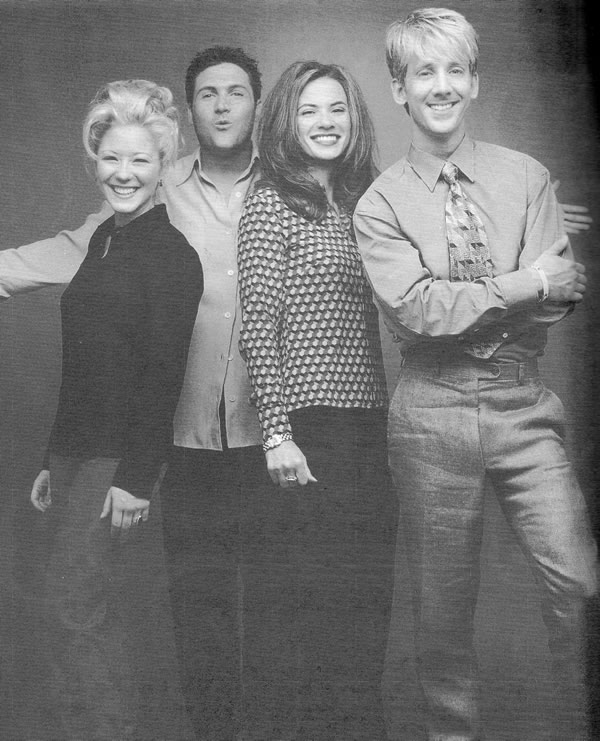
WASHINGTON BLADE: It was great to hear the podcast. It felt like you’d just kinda vanished.
MICHAEL PASSONS: I understand that people would see it that way because you’re just kind of out of the public eye when you’re not making music, not putting music out and doing interviews, and I had not done any of that pretty much in 17 years. And I didn’t really expect this podcast to get the attention that it did get. It was a bit of a surprise to me that there was so much of an interest in a 17-year-old story.
BLADE: Why did it feel like now was the right time? How did it come about?
PASSONS: It wasn’t some calculated move, I was approached by a friend who introduced me to Josh Skinner who has a podcast Jonah and the Whale and said would you like to be a guest? This particular podcast deals with an underwater moment in your life and I had previously had conversations with my family just a couple months earlier, just about my life and the truth of my life so I thought, “Well now is the perfect time,” so it really wasn’t planned out far in advance. An opportunity landed in my lap and I decided to tell the story.
BLADE: Had you been approached before?
PASSONS: Well, I’ve been pretty under the radar. I’ve been traveling the last 15 years with another Christian group, but only in the band. I play keys for Point of Grace. I wanted to keep my foot in the water … but I didn’t want to be the front guy … so I really hadn’t been approached by journalists at all until now.
BLADE: You tell in the podcast about how they came to your house for a meeting in 2003 and this all came to a head. How had they known you were gay in the first place? What led up to that meeting?
PASSONS: Well at that point I was 38 years old, I wasn’t married, I wasn’t dating, (so) rumors begin to swirl when you have that type of scenario and we had discussions about it several years before. So that’s when … they said to me I needed to go to therapy. It really was in 2002 that they wanted me to go to reparative therapy or at least go see a counselor or some guy who said his credentials were counseling gay people. So I did that to appease them but I knew it was a fruitless effort, and as I say in the podcast, that didn’t last very long. I told them I wasn’t going back to that. It had been a conversation for about a year or so before 2003.
BLADE: Did you have a pretty good relationship with them otherwise?
PASSONS: Well over the course of the eight years we were traveling together, I saw those people more than anyone else. Our schedule was so demanding and we toured almost nonstop. … So we did at the time have this family-type relationship but … groups often have a shorter shelf life than solo artists because there are multiple people with multiple goals and aspirations and so unless all four of us aligned, there were always going to be these times where one wants to do a solo deal or they think we should do this or go in this direction and so we kind of started growing apart in our vision. Jody and Janna wanted to do solo records and I thought that was something that was going to fracture the group and our brand and that did cause some tensions because the other two members really wanted to focus our efforts on the Avalon brand because that’s what was familiar to everyone. So over the years we became not as close and then of course you add something like this which kind of draws a line and you have to choose what side of the line you’re going to be on.
BLADE: Bear with me a sec, but I’m going to read you Jody’s quote to CCM Magazine in April, 2004 when he said: “We had a meeting at Michael’s house one day and he told us he was going to move on to other things. We sat and cried and felt like the rug had been pulled out from under us. Things had felt great with the new group and Michael seemed to get along and blend vocally with (then-new member) Melissa (Greene) really well. But Michael had been with us from the beginning and just felt it was time for him to do something else. It’s weird but since his departure, it seems everyone is looking for some scandalous thing to have happened there. It makes me just want to say, ‘Look, I’m sorry to disappoint you that we don’t have some juicy gossip or ‘Dynasty’ episode happening here.” Based on what you shared in the podcast, that was a gross mischaracterization of how it went down. Did you read that at the time? How did it make you feel?
PASSONS: At the time the record label and management held really right reins on us because they created the group, it was their idea. They wanted to find a group that was already in existence that was two guys, two girls. They couldn’t do it so they said, “Let’s just put one together,” so we never felt like we had ownership of much. … So when management and label say, “This is what you are to say,” it became kind of like a bullshit fest at that point. You just gotta stick with the story and that’s what Jody was doing, he was sticking with the story he was told to say. … That was just the way they chose to handle it at the time. … Interestingly enough, Jody reached out to me after the podcast aired and we had not really talked in 17 years other than bumping into each other in a restaurant and saying a quick hello. We met for about an hour we met at a park here in Nashville and just walked around and he apologized profusely and said his heart was broken when he was listening to that podcast. He was very sincere and I accepted what he had to say and I feel like our relationship has actually — there was some definite closure there as far as what I’d been feeling all of these years and so that was a good thing that came out of this and I’m glad he reached out to me.
The Blade invited McBrayer to comment. In response to the question, “Did you feel muzzled by the label?” he sent this response: “Absolutely muzzled. However I would have never ever said anything to hurt Michael’s reputation. We were asked for years about what happened and myself and my family refused to say anything that would put Michael in a bad light. We were given a statement and told to go with it. We did everything we were told at the time. … Michael knows I love him and hate how all of it went down and how he was treated by the industry. I’m so thankful he’s happy and grown beyond it all now. I will continue to protect him. He will always be family.”
BLADE: Was there any truth to what they were saying? Had you been considering a solo album?
PASSONS: No. I know my strengths and my strength was not as a solo artist. … I enjoyed the team mentality of a group. … I think fans and people outside the industry took the press release at face value but people inside the industry heard pretty quickly what had really happened. Gossip and rumors spread really quickly around Nashville so I just thought, “OK, I’m gonna just start life No. 3 here.” (chuckles)
BLADE: A few other big CCM artists eventually came out like Jennifer Knapp and Ray Boltz. Did you follow that or ever compare notes with them?
PASSONS: I don’t know either of those artists personally. I’ve never really interacted with them. I think we did a show once with Jennifer years and years ago but it was just mainly, “Hello, nice to meet you.” I applaud them for living their best life and telling their truth but I just never felt like mine was necessarily a story that needed to be told. I wasn’t a solo artist. I would get recognized occasionally. People would say, “Oh, you’re that guy who was in that group,” but I would say 80 percent of fans just knew me as the blond guy. So I didn’t feel like I had tons of name recognition or that my story mattered. But in the last few years, I wanted to be more truthful with my family so that’s really where all this came out of.
BLADE: Did anybody else from your CCM days reach out besides Jody?
PASSONS: I’ve received tons of texts and Instagram messages from friends from home, friends from college, fans, strangers. As far as the industry, some people that I haven’t seen in a while. It was very interesting. Amy Grant texted me and told me she listened and thought my story was beautiful in the way I told it and graceful and I appreciated that. Susan Ashton reached out and I haven’t seen her in years. She was very encouraging. She said, “You are seen and heard and loved.” Everything has been overwhelmingly positive.
BLADE: Did you get to know the other artists very well or have much interaction on the multi-artist tours you did like “Emmanuel” or “My Utmost”?
PASSONS: Yeah, we had a lot of time to just hang out, especially on the bus. You’re traveling late at night and everyone’s wired so you’re staying up and visiting. But we were really new artists at that time and we were thrown into a mix of all of these people that were our mentors, our heroes. We were fans of theirs and now we’re all of a sudden peers, just because of how Avalon came together. Our very first tour before we even sang a note on a record was “Young Messiah” in ’95. We had just come together weeks before and just had enough time to record one Christmas song so that we could sing that song on that tour and there we were next to 4 HIM and Point of Grace and Steven Curtis Chapman and Larnelle Harris and that was mind-blowing to be with all these great artists. But yes, everyone was very welcoming had lots of encouragement for us and advice and I actually really enjoyed those tours.
BLADE: I saw you guys once with Twila Paris. What was she like?
PASSONS: That was our first tour (the “Where I Stand Tour” in 1997). We did Young Messiah that Christmas and then we did our record, then we toured with Twila. We were definitely getting our feet wet just seeing how this industry was going to work … how we were gonna mesh as a group because we were thrown on stage and we had to find our blend. Live, It’s one thing to be in the studio and be mixed and blended but to sing live, the Twila Paris tour was really just where we began to hone our craft as a group and so yeah, that was wonderful. I had many good experiences wth that tour. We did a spring tour and a fall tour with Twila and it was a long tour but we definitely leaned a lot.
BLADE: Is there anybody in CCM who struck you as markedly different from their public persona?
PASSONS: I feel like everyone would be a little different than what you perceive them to be because you only see a very structured view of them by the PR department of the record label. I really enjoyed getting to know Sandi Patty because when you listen to her music, you just don’t pick up on the edge that she has. She has this great sense of humor that’s a little edgy. I don’t know, my image of Sandi Patty was that she was always walking around in some state of meditation or sitting around in a prayer circle because when you’re growing up you just think of someone in such a reverent way because you respected their music so much and she was just she a cut up, she kidded around, she invited us to her home in Indiana at that point just to hang out with her family and I just I enjoyed seeing a whole different side of her. She’s a very strong personality, a strong woman and listening and singing along with her records, it was just good to see the other side of her.
BLADE: What have you been living on all these years?
PASSONS: I play for Point of Grace and also a friend of mine in town, an attorney and I actually work with her in her law practice and of course being friends with the boss, you can leave anytime and so I’m free to travel whenever I need to and want to so that allows me to hang out with Point of Grace and go where they go. 2020 has been interesting. Since March, we’ve only had two shows and they were very small, so it’s been really interesting year for sure.
BLADE: What denomination did you grow up in?
PASSONS: Southern Baptist. A little country church in Mississippi.
BLADE: Are there still elements of Baptist or evangelical theology you struggle with? Queer or otherwise?
PASSONS: I’m past struggling with it. Of course, it’s something I think about often but I don’t struggle with it any longer. … I’ve definitely got a different view of spiritualism. I don’t consider myself religious but I do believe in God and so I do have a spiritual life but it just doesn’t involve organized religion and that’s just where I’ve landed.
BLADE: But do you still believe the Christianity basics — Jesus died for our sins and rose on the third day and so on or is it a broader thing for you?
PASSONS: It’s a broader spiritual thing and like I said in my previous interview, I’m just in this place of my prayer to God is show me what is true. I’m not gonna close my mind to anything, I’m not going to say, “Oh this is what I was taught and I don’t believe that anymore,” I just want to step back and rebuild all those boxes, rebuild what my spirituality is, kind of like just implode it to ground level and let’s start again. I was taught by very well-intended people. All my Sunday School teachers in that little church, they didn’t have any malice, they were well-intended people teaching what they believed. We were spoon fed, so at some point in your life you have to just decide of all that information you took in, what do you really believe? I had to get to the point where I was OK disagreeing and not believing some of the things I was taught. it wasn’t disrespectful to those people, I just have to find my own way.
BLADE: Do you think the conservative, white evangelical world will ever become openly accepting of LGBT people? Is it a lost cause or could it be a whole different story in another generation?
PASSONS: I think there is hope. I’ve seen so much progress in Christian circles just in my lifetime that I never thought I would see. It’s pockets, it’s not widespread, but … I think there is hope. A lot of things used to be justified with scripture that they eventually came around on. (Author) Peter Gomes calls it “the last prejudice of the church.” … After I left, Avalon recorded a song called “Orphans of God,” which I thought was interesting that they were singing it because I was definitely an outcast to them. But now my friend (out country singer) Ty Herndon and Kristen Chenoweth are going to cover it for a Christmas release as a duet and they asked Melissa Greene and I to sing backing vocals on it so now it will take on a whole new meaning. It was a really nice, full circle moment.
BLADE: Did you keep up with what Avalon was doing much after you were kicked out?
PASSONS: No. It would have put me in a bad headspace.
BLADE: Have you had many boyfriends? Are you in a relationship now?
PASSONS: I am. I’m with a wonderful guy now and it’s going well.
BLADE: Not married though?
PASSONS: No, not married (laughs).
BLADE: How long was it before you were comfortable dating guys?
PASSONS: It took me a while, because when all that went down, I internalized a lot of things and I thought, “Well this is my fault,” type of thing. It really took many years for me to just work through all the junk and work through that cloud in my head and so it wasn’t like some big unleashing. It wasn’t like I left Avalon and just started living my best life, it definitely took awhile to repair the hurt that happened from those several years when Avalon was ending and all the things I went through at that point.
BLADE: Do you know of other LGBT people in CCM who are not out?
PASSONS: Yeah, I do. I feel for them because I know that panicky feeling I used to have, that someone might catch on. … But I think a lot of conservative Christians might be naive as to how many people are gay or bi in their church. You learn from a very early age to be a good actor.
BLADE: Who was your favorite Avalon producer to work with?
PASSONS: Brown Bannister produced most of the records when I was in the group. He’s, you know, such an icon in our industry and I have so much reverence for him and so much respect, so it was an honor to work with him. He actually brought out the best in me. There was something about just his people skills and he was just so kind and thoughtful in how he spoke with you and guided you through the recording process. He just took the time, even just to find the right microphone for me, because the mic in the studio can make a world of difference. I remember going through five or six mics before we found the right one. A lot of producers are just like, “OK let’s get this going, all right that’s great on to the next one.” He just took time to make it right and I appreciated that.
BLADE: How long did it take to make those albums on average?
PASSONS: When it came time to record, we would try to just block off weeks where we would just go in there and do vocals, vocals, vocals vocals and really mainly weekdays because we would go out on the weekends and do one-offs, you know, weekend dates here and there. So we wouldn’t obviously do a new record in the midst of a tour because we’d want to tour the new record but during our one-offs we would get in there and try to get in it done and probably over the course of a month and a half, two months, we would have everything done.
BLADE: How involved were you all with the vocal arrangements? I always loved that outro and all those layers on “We Are the Reason,” for instance. How did you come up with all those intricate lines?
PASSONS: We had a great vocal vocal producer named Michael Mellett and he had been a studio singer in Nashville a long time and had toured with Billy Joel as a background singer. He would come in and help arrange our parts and he was amazing at it. And I remember he did work on our Christmas record and I remember that outro those alternate melodies that he helped us come up with, I loved that too. I felt like that really updated the song. It’s interesting because when we did it it was 20 years old and now it’s been 20 years since we did it, so it needs to be done again now. But it was my favorite song growing up. I used to sing it with an accompaniment tape at my little country church when I was a kid.
BLADE: Yeah, I love it too. Did (songwriter) David Meece ever say anything after you guys cut it?
PASSONS: Indirectly. I think he might have said something to Brown but we heard that he liked it.
BLADE: Who’s a celebrity who would exemplify your type?
PASSONS: (laughs) My type, wow. I’m definitely attracted to someone who is confident but not cocky, someone who has sensitivity but is not overly sensitive, someone who’s just confident in themselves, that’s a big attraction to me. If I were to throw out a celebrity I see a lot of those qualities in, and maybe I’m wrong, but someone like Bradley Cooper.
BLADE: Did you guys in Avalon have any say in choosing singles?
PASSONS: We were included in conversations but I feel like ultimately the label got what they wanted. There’s one little battle that we won and in retrospect not just one, but I just remember this instance, where the label disagreed with us about what we should call our second record and had we listened to the label, we probably would have sold a lot more. They wanted us to call it “Testify to Love” and we had no idea when we were naming the record and about to release it that that would be the one song that Avalon would be known for or that it be our biggest song ever. We thought “A Maze of Grace” was such a clever title. They disagreed but they let us do what we wanted. But who knew “Testify to Love” would become such a huge song for us?
BLADE: Was (Sparrow president) Bill Hearn around much?
PASSONS: We would see him periodically and even his father Billy Ray, who started the company, they’re both deceased now, but they were very approachable. They weren’t always in our meetings because we were more with A&R and publicity and stylists but when they were around, they were very approachable, very hands on.
BLADE: When you win a Dove Award, did you each get one or just one for the group?
PASSONS: At the ceremony, just one is given but then they mail three more to you like a month later.
BLADE: Where do you keep yours?
PASSONS: I have a little study/office that I’m sitting in right now. I just have them on a shelf along with some pictures and mementos and things I like to keep out. The interesting story about one of our Dove Awards is our first Dove Award for new artist of the year and that was in 1998 I believe, and we got new artist of the year at the 29th Dove Awards and that was the year that Whitney Houston performed with Dottie Rambo … and we were backstage after we won doing a press junket so I missed her performance and I’m a huge Whitney Houston fan, like I would rival anyone else saying they’re a huge Whitney Houston fan. (laughs) She’s pretty much my all-time favorite artist. So after the show some press people wanted to take a photo of Whitney holding a Dove Award. She didn’t have one so Jody was standing close by with his and they said, “Can we have your Dove Award for a picture,” and so Whitney took our Dove Award and had her picture made with it and of course that was the only one we got that night and our manager said, “OK I’m gonna take that to the office and hold it ’til the others come in and you all can come by and pick them up,” and so before he could get to it, I got that particular one and took a Sharpie and made a mark on the bottom of it and the day that our manager said, “OK you can come by and pick up the Dove Awards they’re all in,” I was first one in there and I picked them all up and looked for the one I made the mark on because I wanted the one that Whitney had held. So I’m holding it right now, I’ve got that one in my hand and I always think of Whitney.
BLADE: Who were your favorite CCM acts growing up? Or did you listen to more pop?
PASSONS: I listened to a lot of pop and and country. My family is from a rural Mississippi town so country music was really most of what was on the radio and I love that old ’70s country. I still listen to it just because it has a lot of good memories. But I didn’t really know there was such a thing as CCM other than, you know, like Bill and Gloria Gaither-type stuff until I was in high school and someone handed me a tape of “Age to Age” by Amy Grant and that just lit a fire in me like I had no idea this type of thing existed, this is what I want to do. And of course I’ve just been — I was a fan of Amy Grant from that day on and she was definitely a huge influence in the way I would sing music, the way I would write music, I would listen to interviews of her and I would just — she was a great teacher in that respect of just knowing how to respond to questions, how to react to people, just her demeanor, how she handled herself, she was definitely a role model.
BLADE: So that must have been mind-blowing to work with her producer (Brown Bannister) all those years later.
PASSONS: Yeah, definitely. And then her text last week, yeah, that was a nice moment.
BLADE: Why didn’t the more progressive Christian denominations ever have their own version of CCM? There are a few fledgling queer gospel singers out there but nothing like the machine that CCM was. Maybe they didn’t care as much if their kids listened to Metallica or whatever?
PASSONS: I think your theory might hold some weight, just that the conservative Christians were looking for an alternative for them and their families to listen to. One thing I think there probably wouldn’t have been a market in the liberal circles to sustain the industry, they wouldn’t have purchased the CDs and the music. It was the conservatives who made this a business and the Christian music business is a business. You have to be making money to be in CCM, that’s the dichotomy that I’ve always wrestled with. CCM depended on Becky, and I’ll tell you who Becky is. Becky is the pseudonym for their target audience. So any meeting we were in, it was always asked, “What would Becky buy, would Becky like this song?” And Becky is a 20-, 30- or 40-something conservative Christian female and she was the target audience because she was the one buying the CDs and the tapes and downloading the music and so I think that’s maybe why the conservative church has kind of a market on CCM music.
BLADE: Is she related to Karen?
PASSONS: (laughs) That’s funny. If they’re not related, they’re probably best friends.
BLADE: When your bandmates came to your house that day, did it feel like it was coming from a place of love and concern or did it feel like a power play? Like they were trying to oust you?
PASSONS: It did feel like a power play. There were some very complicated personalities in the group and so it definitely — I did not feel much love that day.
BLADE: To me, it was like when Florence got kicked out of the Supremes. They could go on and do whatever they want, but without Florence, it wasn’t the Supremes. Without you, it wasn’t Avalon. The one female singer didn’t matter so much because she always changed. That was like the new season of “Charlie’s Angels,” you always knew she would change. But when you left, it was never the same.
PASSONS: I appreciate that, I’ve heard several say that and it’s always good to know that my contribution is something that was missed.
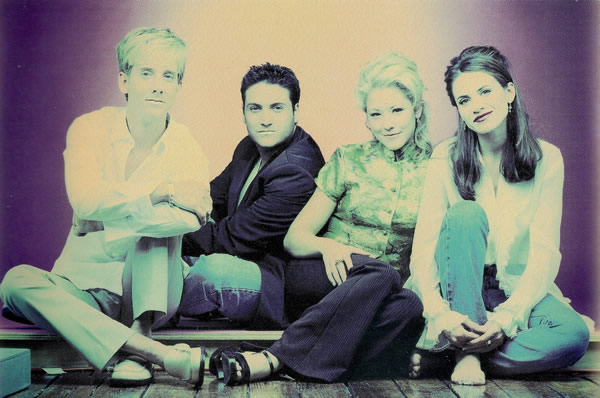
a&e features
Juliet Hawkins’s music defies conventional categorization
‘Keep an open mind, an open heart, and a willingness to evolve’
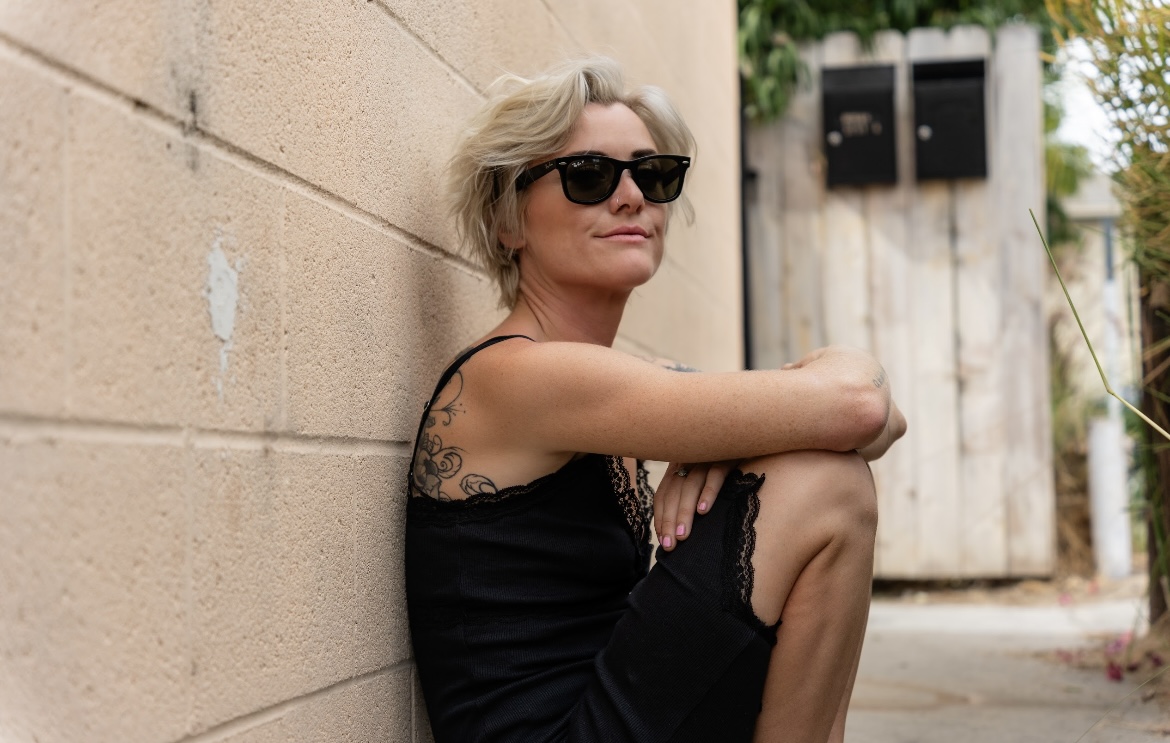
LONG BEACH, Calif. – Emerging from the dynamic music scene of Los Angeles, Juliet Hawkins seamlessly integrates deeply soulful vocals with contemporary production techniques, crafting a distinctive sound that defies conventional categorization.
Drawing inspiration from the emotive depth of Amy Winehouse and weaving together elements of country, blues, and pop, Hawkins’ music can best be described as a fusion–perhaps best termed as soulful electronica. Yet, even this characterization falls short, as Hawkins defines herself as “a blend of a million different inspirations.”
Hawkins’s musical palette mirrors her personae: versatile and eclectic. Any conversation with Hawkins makes this point abundantly clear. She exhibits the archetype of a wild, musical genius while remaining true to her nature-loving, creative spirit. Whether recording in the studio for an album release, performing live in a studio setting, or playing in front of a live audience, Hawkins delivers her music with natural grace.
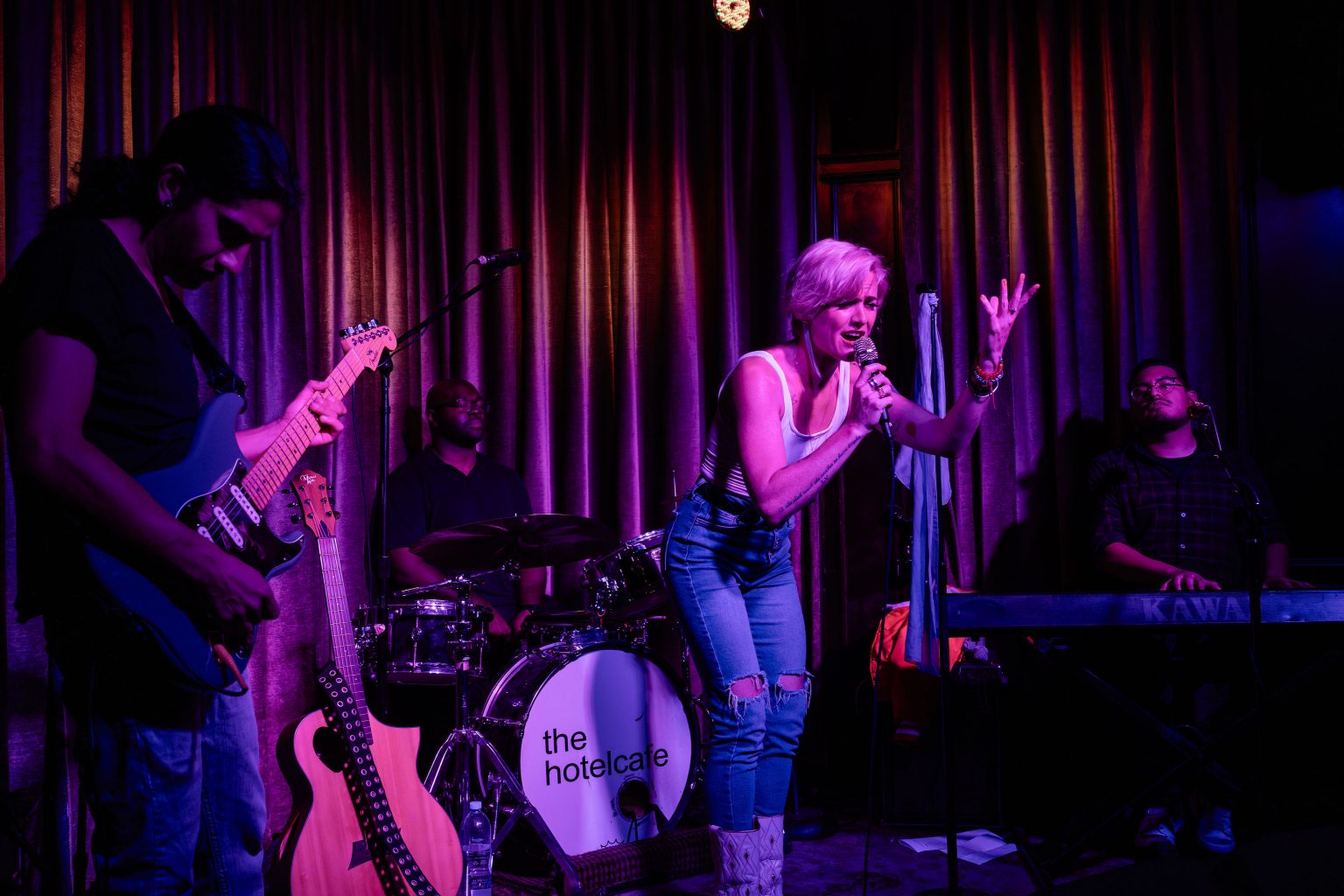
However, Hawkins’s musical journey is far from effortless. Amid personal challenges and adversity, she weaves her personal odyssey of pain and pleasure, transforming these experiences into empowering anthems.
In a candid interview with the Blade, Hawkins spoke with profound openness and vulnerability about her past struggles with opiate and heroin addiction: “That was 10 years ago that I struggled with opiates,” she shared. Yet, instead of letting her previous addiction define her, Hawkins expressed to the Blade that she harbors no shame about her past. “My newer music is much more about empowerment than recovery,” she explained, emphasizing that “writing was the best way to process trauma.”
Despite her struggles with addiction, Hawkins managed to recover. However, she emphasizes that this recovery is deeply intertwined with her spiritual connection to nature. An illustrative instance of Hawkins’ engagement with nature occurred during the COVID pandemic.
Following an impulse that many of us have entertained, she bought a van and chose to live amidst the trees. It was during this period that Hawkins composed the music for her second EP, titled “Lead with Love.”
In many ways, Hawkins deep spiritual connection to nature has been profoundly shaped by her extensive travels. Born in San Diego, spending her formative years in Massachusetts, and later moving to Tennessee before returning to Southern California, she has broadened her interests and exposed herself to the diverse musical landscapes across America.
“Music is the only thing I have left,” Hawkins confides to the Blade, highlighting the integral role that music has in her life. This intimate relationship with music is evident in her sultry and dynamic compositions. Rather than imitating or copying other artists, Hawkins effortlessly integrates sounds from some of her favorite musical influences to create something new. Some of these influences include LP, Lucinda Williams, Lana Del Rey, and, of course, Amy Winehouse, among others.
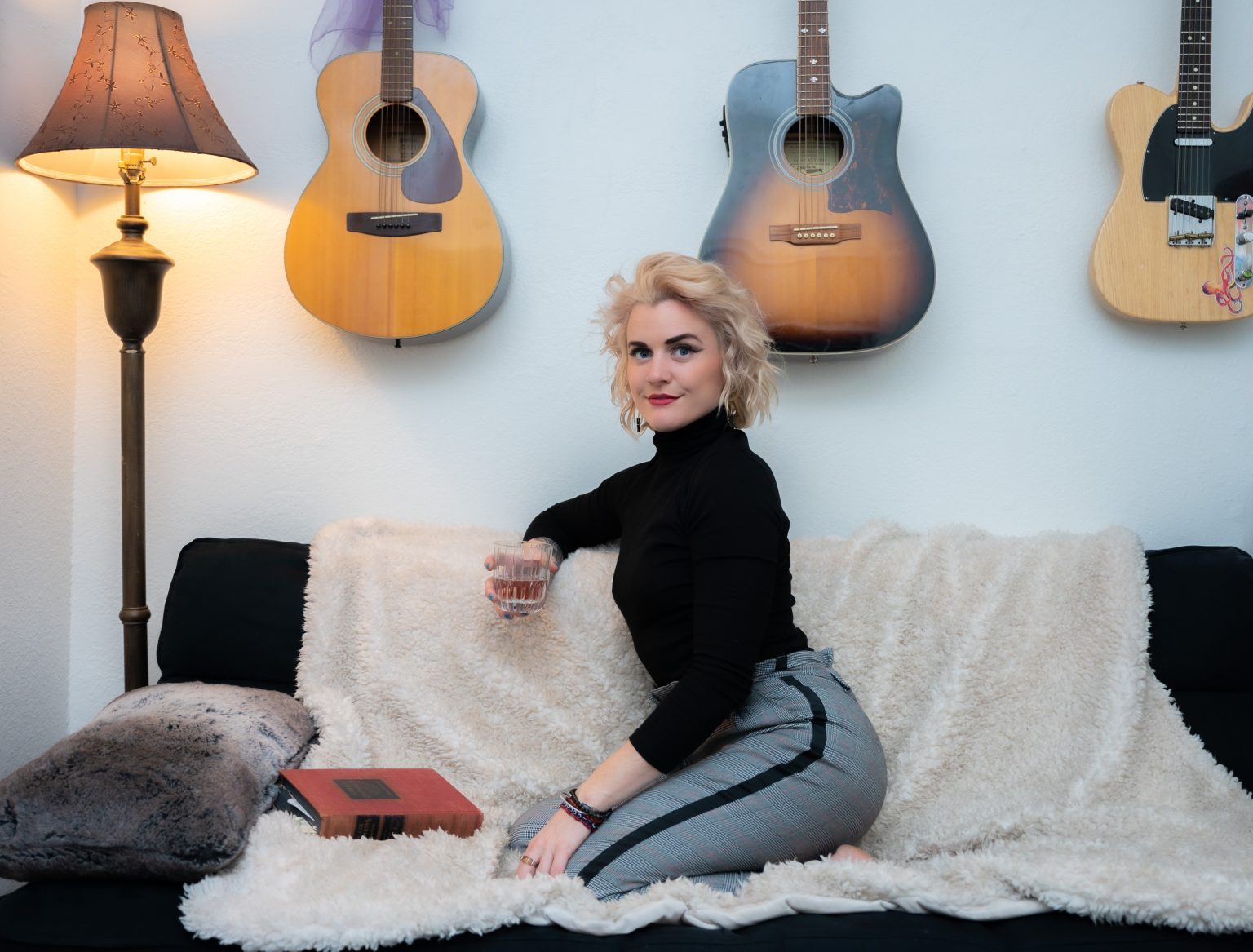
Hawkins has always been passionate about music—-she began with piano at a young age, progressed to guitar, and then to bass, eagerly exploring any instrument she could get her hands on. However, instead of following a traditional path of formalized lessons and structured music theory, Hawkins told the Blade that she “has a hard time following directions and being told what to do.”
This independent approach has led her to experiment with various genres and even join unexpected groups, such as a tribute band for Eric Clapton and Cream. While she acknowledges that her eclectic musical interests might be attributed to ADHD, she holds a different belief: “Creative minds like to move around.”
When discussing her latest musical release — “Stay True (the live album)” which was recorded in a live studio setting — Hawkins describes the experience as a form of improvisation with both herself and the band:
“[The experience] was this divine honey that was flowing through all of us.” She explains that this live album was uncertain in the music’s direction. “For a couple of songs,” Hawkins recalls, “we intuitively closed them out.” By embracing creative spontaneity and refusing to be constrained by fear of mistakes, the live album authentically captures raw sound, complete with background chatter, extended outros, and an extremely somber cover of Ozzy Osbourne’s “Crazy Train” coupled with a slow piano and accompanied strings.
While “Stay True” was a rewarding experience for Hawkins, her favorite live performance took place in an unexpected location—an unattended piano in the middle of an airport. As she began playing Beethoven’s “Moonlight Sonata”, Hawkins shared with the Blade a universal connection we all share with music: “This little girl was dancing as I was playing.”
After the performance, tears welled in Hawkins’ eyes as she was touched by the young girl’s appreciation of her musicianship. Hawkins tells the Blade, “It’s not about playing to an audience—it’s about finding your people.”
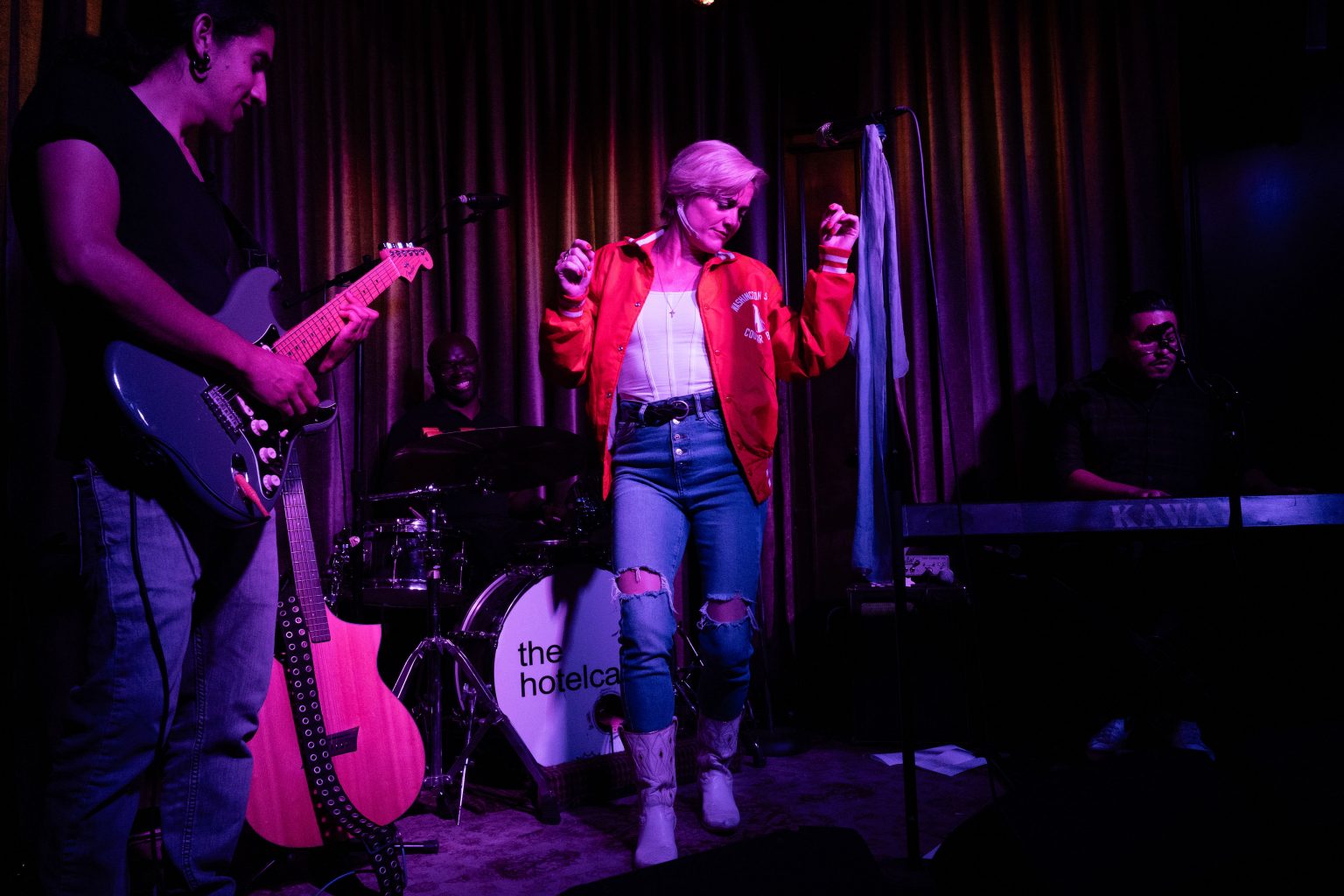
What sets Hawkins apart as an artist is her ability to connect with her audience in diverse settings. She highlights EDC, an electronic dance music festival, as a place where she unabashedly lets her “freak flag” fly and a place to connect with her people. Her affinity for electronic music not only fuels her original pop music creations, but also inspires her to reinterpret songs with an electronic twist. A prime example of this is with her electronic-style cover of Tal Bachman’s 90’s hit, “She’s So High.”
As an openly queer woman in the music industry, Hawkins is on a mission to safeguard artistic integrity. In songs like “My Father’s Men,” she bares her vulnerability and highlights the industry’s misogyny, which often marginalizes gender minorities in their pursuit of artistic expression.
She confides to the Blade, “The industry can be so sexist, misogynist, and oppressive,” and points out that “there are predators in the industry.” Yet, rather than succumbing to apathy, Hawkins is committed to advocating for gender minorities within the music industry.
“Luckily, people are rising up against misogyny, but it’s still there. ‘My Father’s Men’ is a message: It’s time for more people who aren’t just white straight men to have a say.”
Hawkins is also an activist for other causes, with a fervent belief in the preservation of bodily autonomy. Her self-directed music video “I’ll play Daddy,” showcases the joy of embracing one’s body with Hawkins being sensually touched by a plethora of hands. While the song, according to Hawkins, “fell upon deaf ears in the south,” it hasn’t stopped Hawkins from continuing to fight for the causes she believes in. In her interview, Hawkins encapsulated her political stance by quoting an artist she admires:
“To quote Pink, ‘I don’t care about your politics, I care about your kids.’”
When Hawkins isn’t writing music or being a champion for various causes, you might catch her doing the following: camping, rollerblading, painting, teaching music lessons, relaxing with Bernie (her beloved dog), stripping down for artsy photoshoots, or embarking on a quest to find the world’s best hollandaise sauce.
But at the end of the day, Hawkins sums up her main purpose: “To come together with like-minded people and create.”
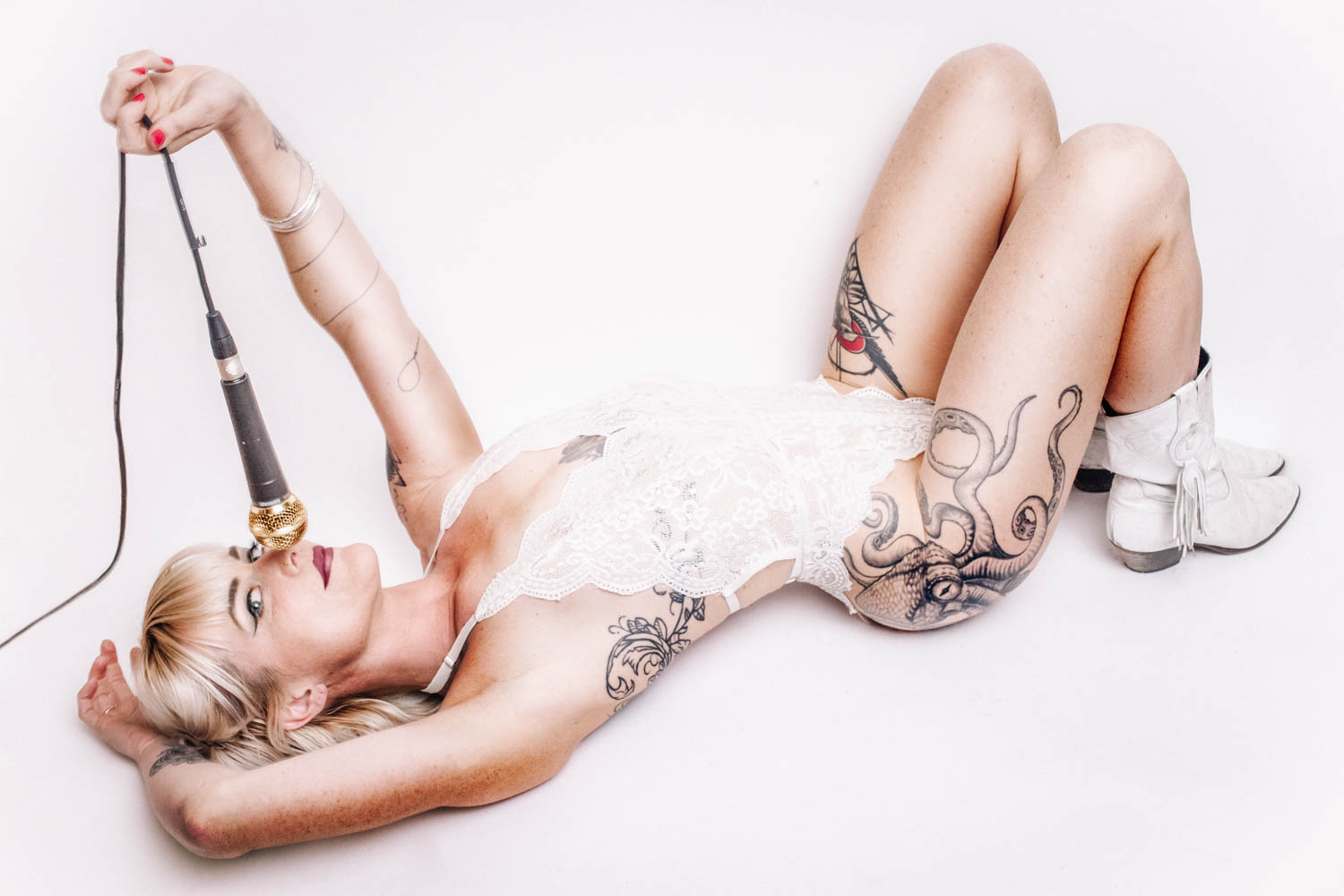
Part of this ever-evolving, coming-of-age-like journey includes an important element: plant-based medicine. Hawkins tells the Blade that she acknowledges her previous experience with addiction and finds certain plants to be useful in her recovery:
“The recovery thing is tricky,” Hawkins explains, “I don’t use opiates—-no powders and no pills—but I am a fan of weed, and I think psilocybin can be helpful when used at the right time.” She emphasizes the role of psychedelics in guiding her towards her purpose. “Thanks for psychedelics, I have a reignited sense of purpose … Music came naturally to me as an outlet to heal.”
While she views the occasional dabbling of psychedelics as a spiritual practice, Hawkins also embraces other rituals, particularly those she performs before and during live shows. “I always carry two rocks with me: a labradorite and a tiger’s eye marble,” she explains.
a&e features
Lavender Mass and the art of serious parody in protest
Part 3 of our series on the history of LGBTQ religion in D.C.
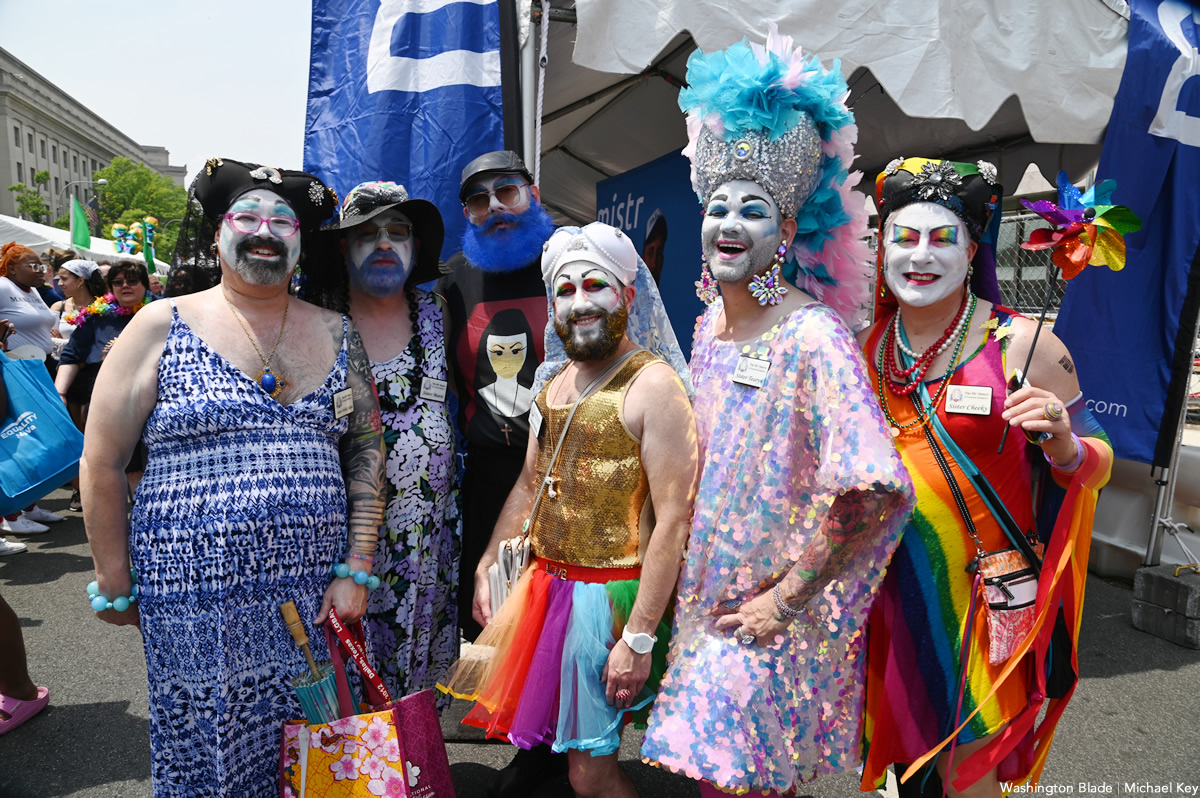
(Editor’s note: Although there has been considerable scholarship focused on LGBTQ community and advocacy in D.C., there is a deficit of scholarship focused on LGBTQ religion in the area. Religion plays an important role in LGBTQ advocacy movements, through queer-affirming ministers and communities, along with queer-phobic churches in the city. This is the final installment of a three-part series exploring the history of religion and LGBTQ advocacy in Washington, D.C. Visit our website for the previous installments.)
Six sisters gathered not so quietly in Marion Park, Washington, D.C. on Saturday, October 8, 2022. As the first sounds of the Women’s March rang out two blocks away at 11 am, the Sisters passed out candles to say Mass on the grass. It was their fifth annual Lavender Mass, but this year’s event in particular told an interesting story of religious reclamation, reimagining a meaningful ritual from an institution that seeks to devalue and oppress queer people.
The D.C. Sisters are a chapter of the Sisters of Perpetual Indulgence, an organization of “drag nuns” ministering to LGBTQ+ and other marginalized communities. What first began as satire on Easter Sunday 1979 when queer men borrowed and wore habits from a production of The Sound of Music became a national organization; the D.C. chapter came about relatively late, receiving approval from the United Nuns Privy Council in April 2016. The D.C. Sisters raise money and contribute to organizations focused on underserved communities in their area, such as Moveable Feast and Trans Lifeline, much like Anglican and Catholic women religious orders.
As Sister Ray Dee O’Active explained, “we tend to say we raise funds, fun, and hell. I love all three. Thousands of dollars for local LGBTQ groups. Pure joy at Pride parades when we greet the next generation of activists. And blatant response to homophobia and transphobia by protest after protest.” The Lavender Mass held on October 8th embodied their response to transphobia both inside and outside pro-choice groups, specifically how the overturn of Roe v. Wade in June 2022 intimately affects members of the LGBTQ+ community.
As a little history about the Mass, Sister Mary Full O’Rage, shown wearing a short red dress and crimson coronet and veil in the photo above developed the Lavender Mass as a “counterpart” or “counter narrative” to the Red Mass, a Catholic Mass held the first Sunday of October in honor Catholics in positions of civil authority, like the Supreme Court Justices. The plan was to celebrate this year’s Lavender Mas on October 1st at the Nuns of the Battlefield Memorial, located right across the street from the Cathedral of St. Matthew the Apostle, where many Supreme Court Justices attend the Red Mass every year.
As Sister Mary explained, this year “it was intended to be a direct protest of the actions of the Supreme Court, in significant measure their overturning of reproductive rights.”
Unfortunately, the October 1st event was canceled due to heavy rain and postponed to October 8th at the recommendation of Sister Ruth Lisque-Hunt and Sister Joy! Totheworld. The focus of the Women’s March this year aligned with the focus of the Lavender Mass—reproductive rights—and this cause, Sister Mary explained, “drove us to plan our Lavender Mass as a true counter-ritual and protest of the Supreme Court of who we expected to attend the Red Mass,” and who were protested in large at the Women’s March.
The “Lavender Mass was something that we could adopt for ourselves,” Sister Mary spoke about past events. The first two Masses took place at the Lutheran Church of the Reformation, right around the corner from the Supreme Court. The second Mass, as Sister Mary explained, celebrated Justice Ruth Bader Ginsburg; “we canonized her.” Canonization of saints in the Catholic Church also takes place during a Mass, a Papal Mass in particular.
During the COVID-19 pandemic, the Sisters moved the Mass outside for safety, and the third and fourth Masses were celebrated at the Nuns of the Battlefield Memorial. “It celebrates nuns, and we are nuns, psycho-clown nuns,” Sister Mary chuckled, “but we are nuns.” After the Mass, the Sisters would gather at a LGBTQ+ safe space or protest at the Catholic Church or Supreme Court. Although they often serve as “sister security” at local events, working to keep queer community members safe according to Sister Amore Fagellare, the Lavender Mass is not widely publicly advertised, out of concern for their own.
On October 8th, nine people gathered on the grass in a circle—six sisters, myself, and two people who were close with professed members—as Sister Mary called us to assemble before leading us all in chanting the chorus to Sister Sledge’s 1979 classic song “We Are Family.”
Next, novice Sister Sybil Liberties set a sacred space, whereby Sister Ruth and Sister Tearyn Upinjustice walked in a circle behind us, unspooling pink and blue ribbons to tie us together as a group. As Sister Sybil explained, “we surround this sacred space in protection and sanctify it with color,” pink for the choice to become a parent and blue for the freedom to choose not to be a parent but also as Sybil elaboration, in recognition of “the broad gender spectrum of people with the ability to become pregnant.” This intentional act was sought to fight transphobia within the fight for reproductive rights.
After singing Lesley Gore’s 1963 song “You Don’t Own Me,” six speakers began the ritual for reproductive rights. Holding out our wax plastic candles, Sister Sybil explained that each speaker would describe a story or reality connected to reproductive rights, and “as I light a series of candles for the different paths we have taken, if you recognize yourself in one of these prayers, I invite you to put your hand over your heart, wherever you are, and know that you are not alone – there is someone else in this gathered community holding their hand over their heart too.”
The Sisters went around the circle lighting a candle for those whose stories include the choice to end a pregnancy; those whose include the unwanted loss of a pregnancy or struggles with fertility; those whose include the choice to give birth, raise or adopt a child; those whose include the choice not to conceive a child, to undergo forced choice, or with no choice at all; those who have encountered violence where there “should have been tenderness and care;” and those whose reproductive stories are still being written today.
After each reading, the group spoke together, “may the beginnings and endings in our stories be held in unconditional love and acceptance,” recalling the Prayer of the Faithful or General Intercessions at Catholic Masswhere congregations respond “Lord, hear our prayer” to each petition. Sister Sybil closed out the ritual as Sister Mary cut the blue and pink ribbons between each person, creating small segments they could take away with them and tie to their garments before walking to the Women’s March. The Sisters gathered their signs, drums, and horns before walking to Folger Park together into the crowd of protestors.
At first glance, the Lavender Mass may appear like religious appropriation, just as the Sisters themselves sometimes look to outsiders. They model themselves after Angelican and Catholic women religious, in dress—they actively refer to their clothing as “habits,” their organization—members must also go through aspirant, postulant, and novice stages to be fully professed and they maintain a hierarchical authority, and in action. Like white and black habits, the Sisters all wear white faces to create a unified image and colorful coronets, varying veil color based on professed stage. Sister Allie Lewya explained at their September 2022 meeting, “something about the veils gives us a lot of authority that is undue,” but as the Sisters reinforced at the Women’s March, they are not cosplayers nor customers, rather committed clergy.
As such, the Sisters see their existence within the liminal spaces between satire, appropriation, and reimagination, instead reclaiming the basis of religious rituals to counter the power holders of this tradition, namely, to counter the Catholic Church and how it celebrates those in positions of authority who restrict reproductive rights. Similarly, the Lavender Mass is modeled after a Catholic or Anglican Mass. It has an intention, namely reproductive rights, a call to assemble, setting of a sacred space, song, chant, and prayer requests. It even uses religious terminology; each section of the Mass is ended with a “may it be/Amen/Awen/Ashay/aho.”
While this ritual—the Lavender Mass—appropriates a religious ritual of the Catholic Church and Anglican Church, this religious appropriation is necessitated by exclusion and queerphobia. As David Ford explains in Queer Psychology, many queer individuals retain a strong connection to their faith communities even though they have experienced trauma from these same communities. Jodi O’Brien builds on this, characterizing Christian religious institutions as spaces of personal meaning making and oppression. This essay further argues that the fact this ritual is adopted and reimagined by a community that the dominant ritual holder—the Catholic Church—oppressed and marginalized, means that it is not religious appropriation at all.
Religious appropriation, as highlighted in Liz Bucar’s recent book, Stealing My Religion (2022), is the acquisition or use of religious traditions, rituals, or objects without a full understanding of the community for which they hold meaning. The Sisters, however, fully understand the implications of calling themselves sisters and the connotations of performing a ritual they call a “Mass” as women religious, a group that do not have this authority in the Catholic Church. It is the reclamation of a tradition that the Sisters of Perpetual Indulgence understand because some were or are part of the Catholic Church.
Some sisters still seek out spiritual meaning, but all also recognize that the Catholic Church itself is an institution that hinders their sisters’ access and actively spreads homophobia and transphobia to this day. As such, through the Lavender Mass, the sisters have reclaimed the Mass as a tool of rebellion in support of queer identity.
Just as the Sisters recognize the meaning and power of the ritual of a Mass, along with the connotations of being a sister, the Lavender Mass fulfilled its purpose as a ritual of intention just as the Sisters fulfill public servants. “As a sister,” Sister Ruth dissected, “as someone who identifies as a drag nun, it perplexes people, but when you get the nitty gritty, we serve a similar purpose, to heal a community, to provide support to a community, to love a community that has not been loved historically in the ways that it should be loved.
The Sisters’ intentionality in recognizing and upholding the role of a woman religious in their work has been well documented as a serious parody for the intention of queer activism by Melissa Wilcox. The Lavender Mass is a form of serious parody, as Wilcox posits in the book: Queer Nuns: Religion, Activism, and Serious Parody(2018). The Mass both challenges the queerphobia of the Catholic Church while also reinforcing the legitimacy of this ritual as a Mass. The Sisters argue that although they would traditionally be excluded from religious leadership in the Catholic Church, they can perform a Mass. In doing so, they challenge the role that women religious play in the Catholic Church as a whole and the power dynamics that exclude queer communities from living authentically within the Church.
By reclaiming a tradition from a religious institution that actively excludes and traumatizes the LGBTQ+ community, the Lavender Mass is a form of religious reclamation in which an oppressed community cultivates queer religious meaning, reclaims a tradition from which they are excluded, and uses it to fuel queer activism (the fight for reproductive rights). This essay argues that the Lavender Mass goes one step further than serious parody. While the Sisters employ serious parody in their religious and activist roles, the Lavender Mass is the active reclamation of a religious tradition for both spiritual and activist ends.
Using the celebration of the Mass as it was intended, just within a different lens for a different purpose, this essay argues, is religious reclamation. As a collection of Austrian and Aotearoan scholars explored most recently in a chapter on acculturation and decolonization, reclamation is associated with the reassertion and ownership of tangibles: of rituals, traditions, objects, and land. The meaning of the Lavender Mass comes not only from the Sisters’ understanding of women religious as a social and religious role but rather from the reclamation of a physical ritual—a Mass—that has specific religious or spiritual meaning for the Sisters.
When asked why it was important to call this ritual a “Mass,” Sister Mary explained: “I think we wanted to have something that denoted a ritual, that was for those who know, that the name signifies that it was a counter-protest. And you know, many of the sisters grew up with faith, not all of them Catholics but some, so I think ‘Mass’ was a name that resonated for many of us.”
As Sister Ray said, “my faith as a queer person tends to ostracize me but the Sisters bring the imagery and language of faith right into the middle of the LGBTQ world.” This Lavender Mass, although only attended and experienced by a few of the Women’s March protests, lived up to its goal as “a form of protest that is hopefully very loud,” as Sister Millie Taint advertised in the Sisters’ September 2022 chapter meeting. It brought religious imagery and language of faith to a march for reproductive rights, using a recognized model of ritual to empower protestors.
The Lavender Mass this year, as always, was an act of rebellion, but by situating itself before the Women’s March and focusing its intention for reproductive rights, the Sisters’ reclaimed a religious ritual from a system of authority which actively oppressed LGBTQ+ peoples and those with the ability to become pregnant, namely the Catholic Church, and for harnessing it for personal, political, and spiritual power. In essence, it modelled a system of religious reclamation, by which a marginalized community takes up a religious ritual to make its own meaning and oppose the religious institution that seeks to exclude the community from ritual participation.
Emma Cieslik will be presenting on LGBTQ+ Religion in the Capital at the DC History Conference on Friday, April 6th. She is working with a DC History Fellow to establish a roundtable committed to recording and preserving this vital history. If you have any information about these histories, please reach out to Emma Cieslik at [email protected] or the Rainbow History Project at [email protected].
a&e features
Conflict and profound loss: the AIDS epidemic and religious protest
Part 2 of our series on the history of LGBTQ religion in D.C.
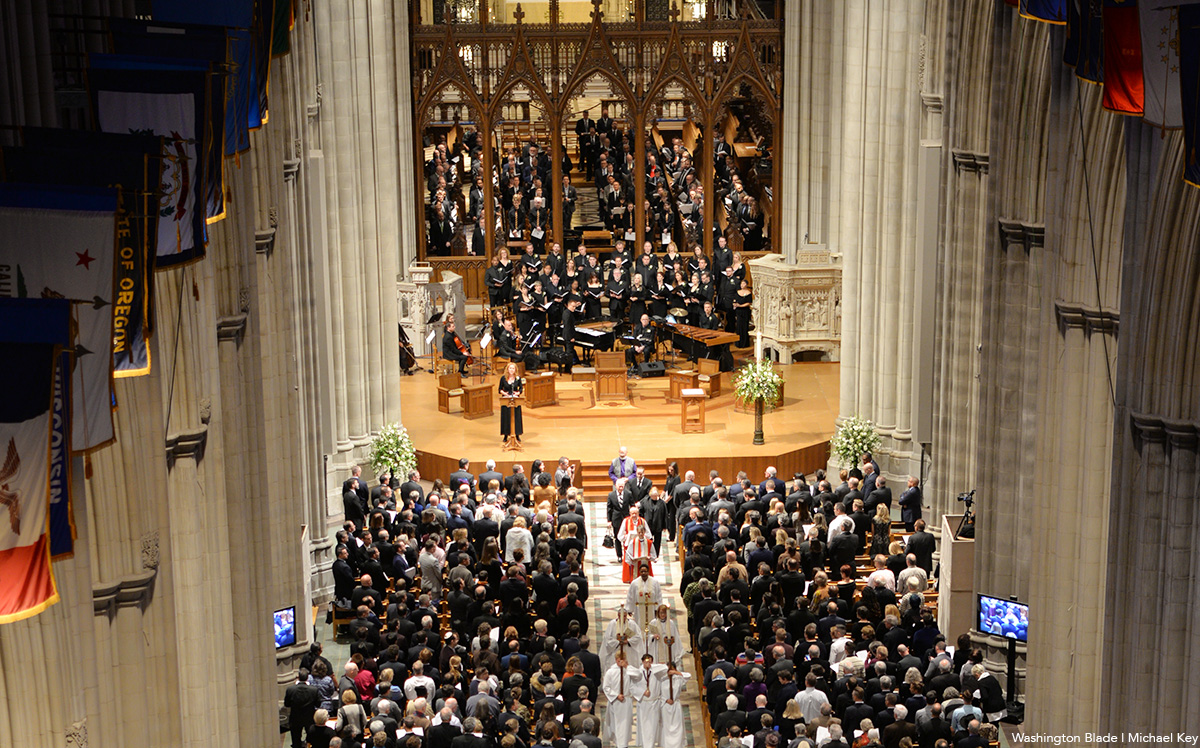
(Editor’s note: Although there has been considerable scholarship focused on LGBTQ community and advocacy in D.C., there is a deficit of scholarship focused on LGBTQ religion in the area. Religion plays an important role in LGBTQ advocacy movements, through queer-affirming ministers and communities, along with queer-phobic churches in the city. This is part two of a three-part series exploring the history of religion and LGBTQ advocacy in Washington, D.C.)
The Gay Liberation Front of DC previously organized a Gay Pride Week in 1972, by the efforts of Chuck Hall, Bruce Pennington, and Cade Ware. Deacon Maccubbin was still perplexed how Washington, D.C., which had a diverse gay scene, albeit a segregated one, did not have a large festival to gather together like that in New York. Together with former Gay Activists Alliance president Bob Carpenter, Maccubbin set out to plan a Pride event specific to the city, and on June 22, 1975, “Gay Pride Day” was the first officially recognized Pride celebration in D.C. The first Gay Pride Day was scheduled one week in advance of the Christopher Street Liberation Day parade in New York City so that LGBTQ D.C. residents could participate in that parade alongside others along the East Coast.
One year later, the timing sparked controversy because Gay Pride Day fell on June 20, also Father’s Day. John Wilson’s opponent in the Democratic primary election spoke out against Wilson’s support of holding Pride Day on the 20th. His opponent argued that Wilson was “an embarrassment to the city for introducing a Council resolution allowing Gay Pride Day to fall on Father’s Day.” Similarly William Stahr of Baltimore shared in a column in The Washington Star that the Council decision “is outrageously anti-social because the encouragement of homosexuality weakens society by undermining the family.”
LGBTQ community representative David L. Aiken wrote a letter back to the editor of The Washington Star on June 18, 1976 explaining the community’s decision.
“Gays do not threaten fatherhood, motherhood, or any other traditional values. Many people who are fathers or mothers have a realization that there is another side to their personality that can be expressed through gay love. The two are not mutually exclusive. What gay pride does challenge, however, is the bigoted assumption that heterosexual relations are the only kind about which it is polite to speak.”
Many Catholic priests in the area were upset that it fell on Father’s Day as well, which is celebrated in American Catholic churches with a special Mass that day, but the organizer of the second annual Gay Pride Day, Frank Akers, then a staff member at the Washington Blade, reported that the 1976 Gay Pride Day “was a success spiritually, if not financially.”
But the success of the 1976 Gay Pride Day was followed shortly after by the start of the HIV/AIDS pandemic. In the late 1970s, the HIV strain arrived in the United States and men who had sex with men were disproportionately affected. While LGBTQ individuals still faced intense persecution in secular and some religious spaces, the visibility of religiously motivated homophobia only grew and grew as conservative religious leaders like Anita Bryant and Jerry Falwell argued that HIV/AIDS was God’s punishment for the “promiscuity” of LGBTQ individuals. He made this especially clear in a discussion with MCC founder Troy Perry on July 6, 1983. Like many major cities, Washington, D.C. was hit hard but affirming organizations worked to provide care for LGBTQ people.
In 1982, D.C.’s MCC partnered with the Whitman-Walker Clinic, the NIH, MCC Baltimore, and Georgetown University Hospital to host one of the first AIDS forums in the nation (the event was held at the church). At a time when people were still weary of contact with HIV-positive individuals, water baptism was held by Faith Temple at Calvary Baptist Church in D.C. in 1986. This occurred at a time when many churches were not baptizing persons known or thought to be HIV positive or had AIDS. On Oct. 12, 1991, the NAMES Project Chapter and the Clergy Commission on AIDS coordinated the display of pieces of the AIDS Memorial Quilt at DMV churches, from St. Augustine Catholic Church to New Bethel Baptist Church to the National Cathedral.
The National Cathedral first began its ministry around HIV/AIDS in 1986, hosting a conference that same year to address how religion and religious communities can serve as allies and caregivers. The National Cathedral also displayed the quilt and organized services around the memorial in 1988, the year of the national tour of the Quilt, as well as in 1990, 1993, 1994, and 1996. Most recently, The Washington Cathedral also hosted the AIDS Memorial Quilt in July 2012, on the quilt’s 25th anniversary. From July 17-26, the Cathedral honored all those who died from AIDS and individuals who are living with HIV/AIDS. Dr. James Curran spoke during the interfaith memorial service at the Cathedral on Saturday, July 21.
However, at the same time, the Dignity chapter meeting at Georgetown University was forced to move to St. Margaret Episcopal Church after the Vatican released a letter by Cardinal Joseph Ratzinger claiming that LGBTQ individuals are “objectively disordered” in October 1986. Social and violent homophobia continued into the early 1990s, especially as focus on family rights were conflated with anti-LGBTQ legislation in the late 1980s. Another resurgence of family rights would occur in the late 2010s and early 2020s with the election of Donald Trump as president in 2016.
By the late 1990s and early 2000s, many more congregations were moving to become open and affirming. On Dec. 11, 2001, Bruce Pennington moderated a panel discussion “Creating Communities of Faith” featuring Faisal Alam, Jerry Goldberg, Andrew Hudson, Bob Miailovich, Dan Schellhorn, and Michael Vanzan. Ten years later, the DC Metropolitan Community Church celebrated 40 years of service to LGBTQ Washingtonians. As one of the first Metropolitan Community Churches in the DMV area, DC’s MCC was instrumental in founding the New Life MCC of Hampton Rocks, Norfolk, Va., in 1977, MCC of Northern Virginia, Oakton, Va., in 1981, Open Door MCC in Boyds, Md., in 1982, and Holy Redeemer MCC College Park, Md., in 1998.
That same year in 2011, Dignity/Washington hosted the National Convention of Dignity USA in D.C., during which four long-term Dignity couples from across the country were married by Dignity/Washington members under the new DC marriage equality laws. A number of other congregations also became actively involved in Capital Pride events, including the Cleveland Park UCC, First Congregational UCC, and Westmoreland UCC. The three groups hosted a UCC welcome book with other churches every year at the Capital Pride Festival up until the COVID-19 pandemic.
At the same time, new religious communities developed. Wiccan, neo-pagan, and pagan communities have long been spiritual refugees for LGBTQ communities, and pagan faith communities were first established in the DMV in the early 2010s. Also in 2011, Circle Sanctuary Ministers Jeanet and David Ewing founded the Potomac Circle Ministries in Northern Virginia to minister to pagans in the DMV area. In March 2013, Circle Sanctuary founder Rev. Selena Fox and other Circle Ministers attended the Marriage Equality rally in front of the U.S. Supreme Court, and she participated in the interfaith service at the Lutheran Church of the Reformation in Washington, DC. In November 2013, Jeanet and David Ewing performed a same-sex wedding in front of the Supreme Court in Washington, D.C.
What followed was a year of interfaith LGBTQ ministry in the DC area, which is celebrated every June with a Pride Interfaith Service held at a different DC worship space. The service is coordinated by DC Center Faith, the successor to the Celebration of the Spirit Coalition and the Washington Area Gay/Lesbian Interfaith Alliance which have been hosting interfaith services since 1983. In fact, much of the history of DC’s LGBTQ+ religious communities was recorded in November 2014 at an event organized by Center Faith called “Stepping Out” hosted at the Westminster Presbyterian Church, SW, D.C.
Center Faith partnered and still partners with Jewish, Christian, Muslim, Hindu, Sikh, Buddist, Unitarian universalist, Centers for Spiritual Living, Pagan, Wiccan, and Earth Religions faith communities who are supportive and inclusive of LGBTQ individuals. Through Center Faith, local faith leaders made strong connections through which they would gather and protest for LGBTQ rights. For example, faith leaders gathered together in front of the Supreme Court on Oct. 8, 2019 for the MoveOn Rally right as the Supreme Court heard a case that would overturn LGBTQ individuals’ right to work and allow employers to fire someone because they were LGBTQ.
Later into the 2010s, LGBTQ organizations exploring religion and humor came to be part of the D.C. area. The DC House of the Sisters of Perpetual Indulgence, “The Abbey of Magnificent Intentions” was approved by the United Nuns Privy Council in April 2016. Just as Deacon Maccubbin and David L. Aiken had done 30 years earlier, fighting back against conservative religious pushback to holding the Gay Pride Day on Father’s Day in 1976, the DC Sisters of Perpetual Indulgence came together on Oct. 8, 2022 to hold their fifth annual Lavender Mass — a counter event to the Red Mass. The Red Mass is a Catholic Mass held on the first Sunday of October to honor Catholics in positions of civil authority, like the Supreme Court Justices.
That Lavender Mass took place right before the March for Reproductive Rights following the overturn of Roe v. Wade in June 2022. This important moment in DC’s LGBTQ+ religious history will be explored next, reviewing the impact of this event right as the original founder of the Lavender Mass is stepping out of this role before moving out of the Capitol.
Emma Cieslik is presenting on LGBTQ+ Religion in the Capital at the DC History Conference on April 5. She is working with a DC History Fellow to establish a roundtable committed to recording and preserving this vital history. If you have any information about these histories, please reach out to Emma Cieslik at [email protected] or the Rainbow History Project at [email protected].
-

 European Union5 days ago
European Union5 days agoGay Polish government minister represents change of course
-

 Opinions5 days ago
Opinions5 days agoNetanyahu must go!
-
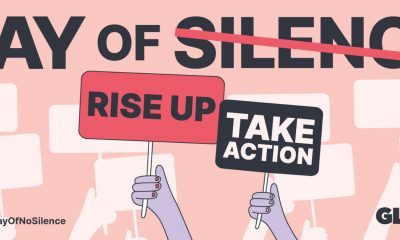
 LGBTQ Non-Profit Organizations4 days ago
LGBTQ Non-Profit Organizations4 days agoDay of [no] silence, a call to speak out against anti-LGBTQ+ hate
-

 Colorado3 days ago
Colorado3 days agoFive transgender, nonbinary ICE detainees allege mistreatment at Colo. detention center

